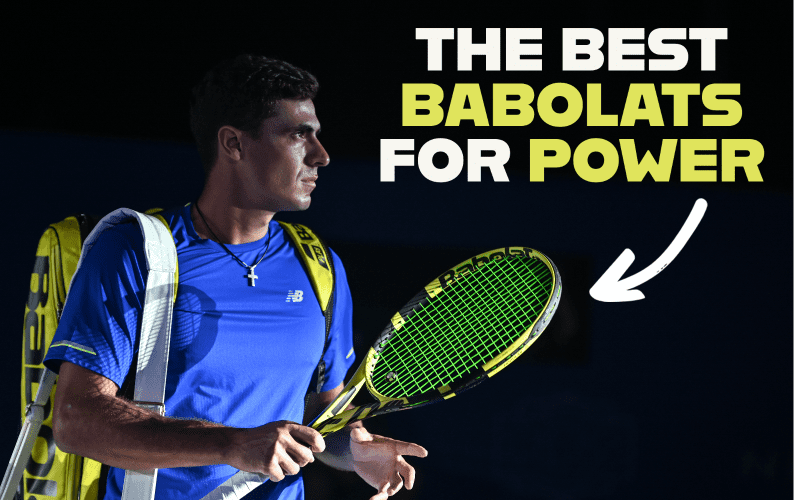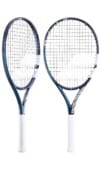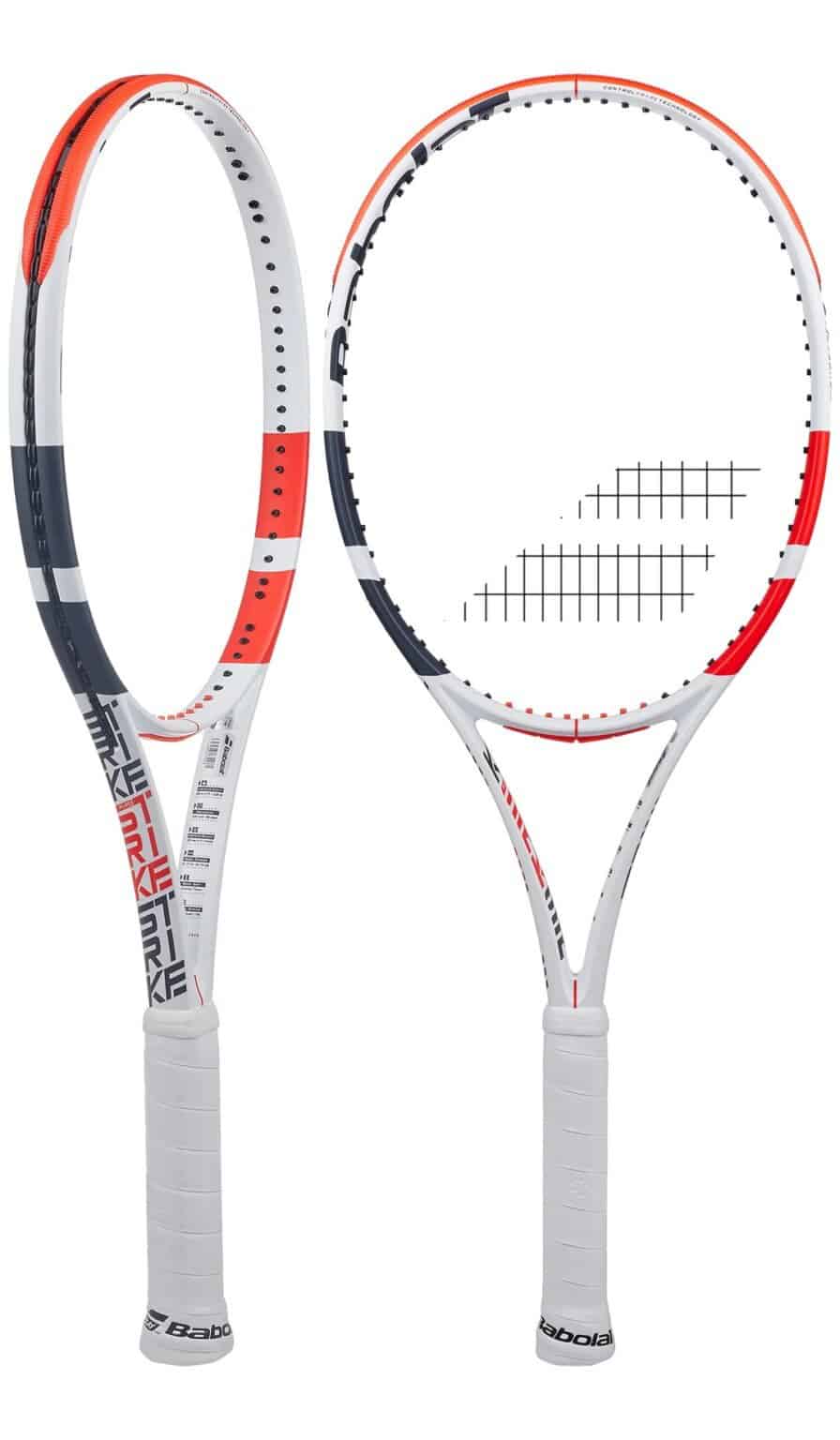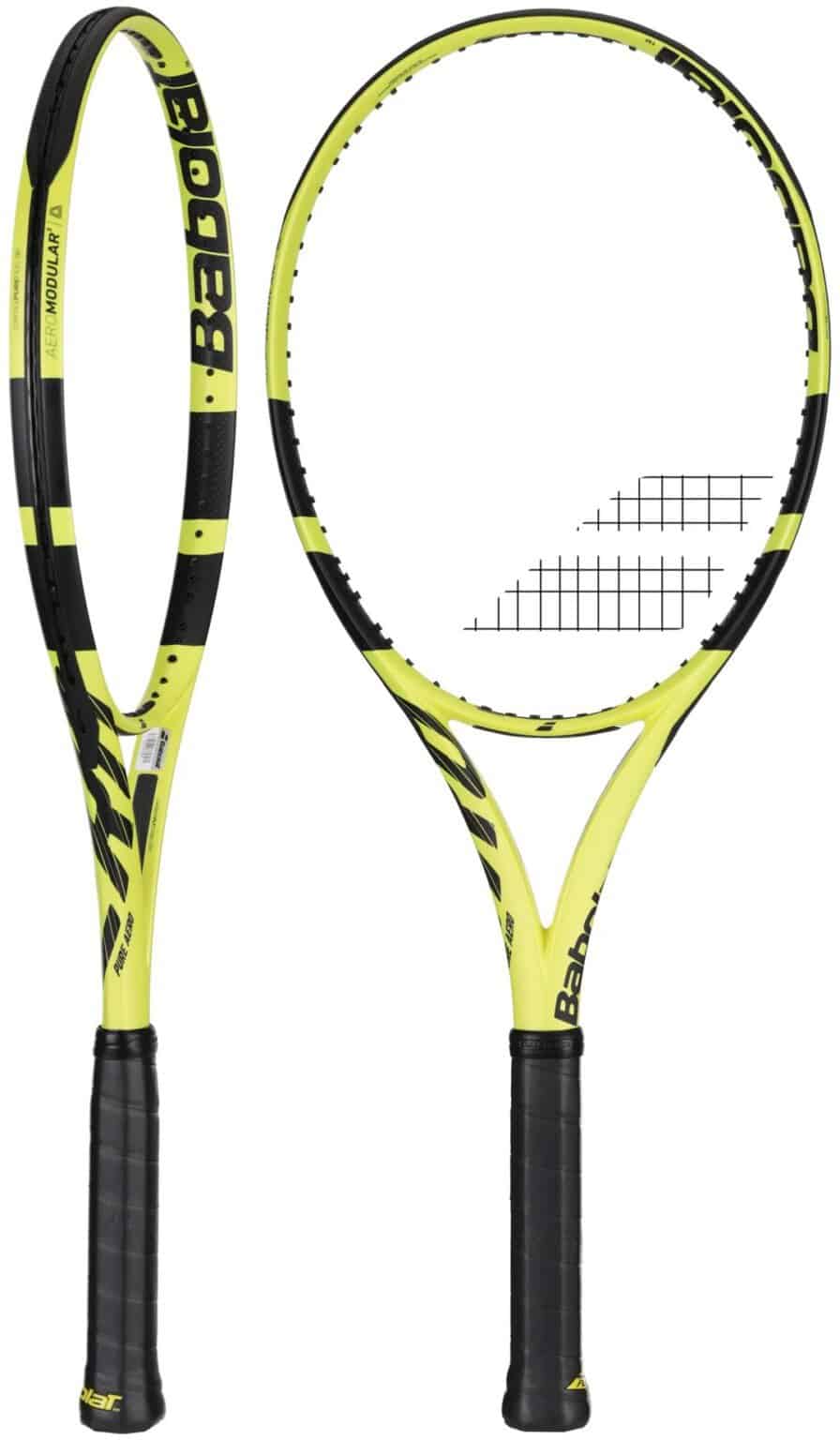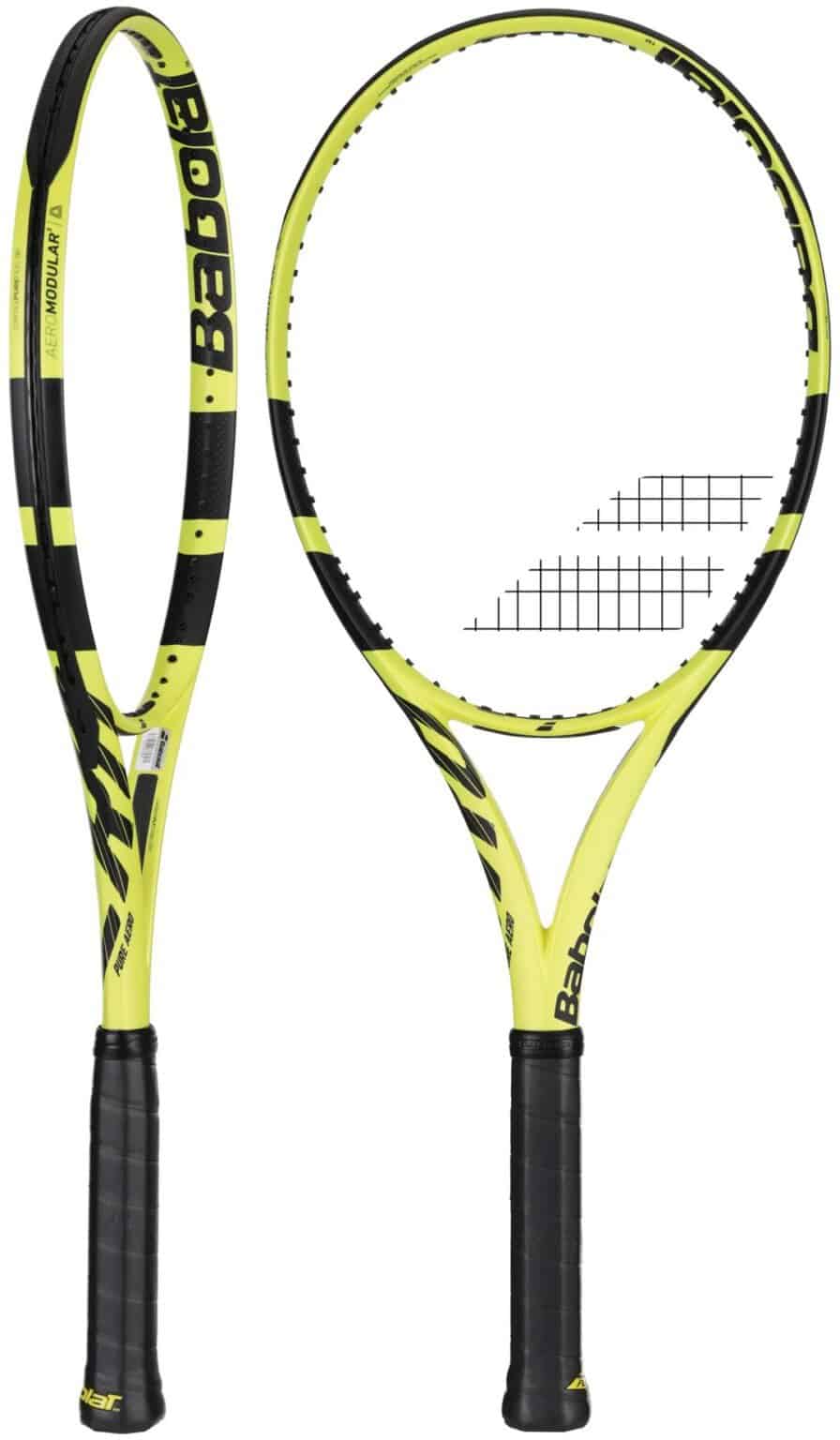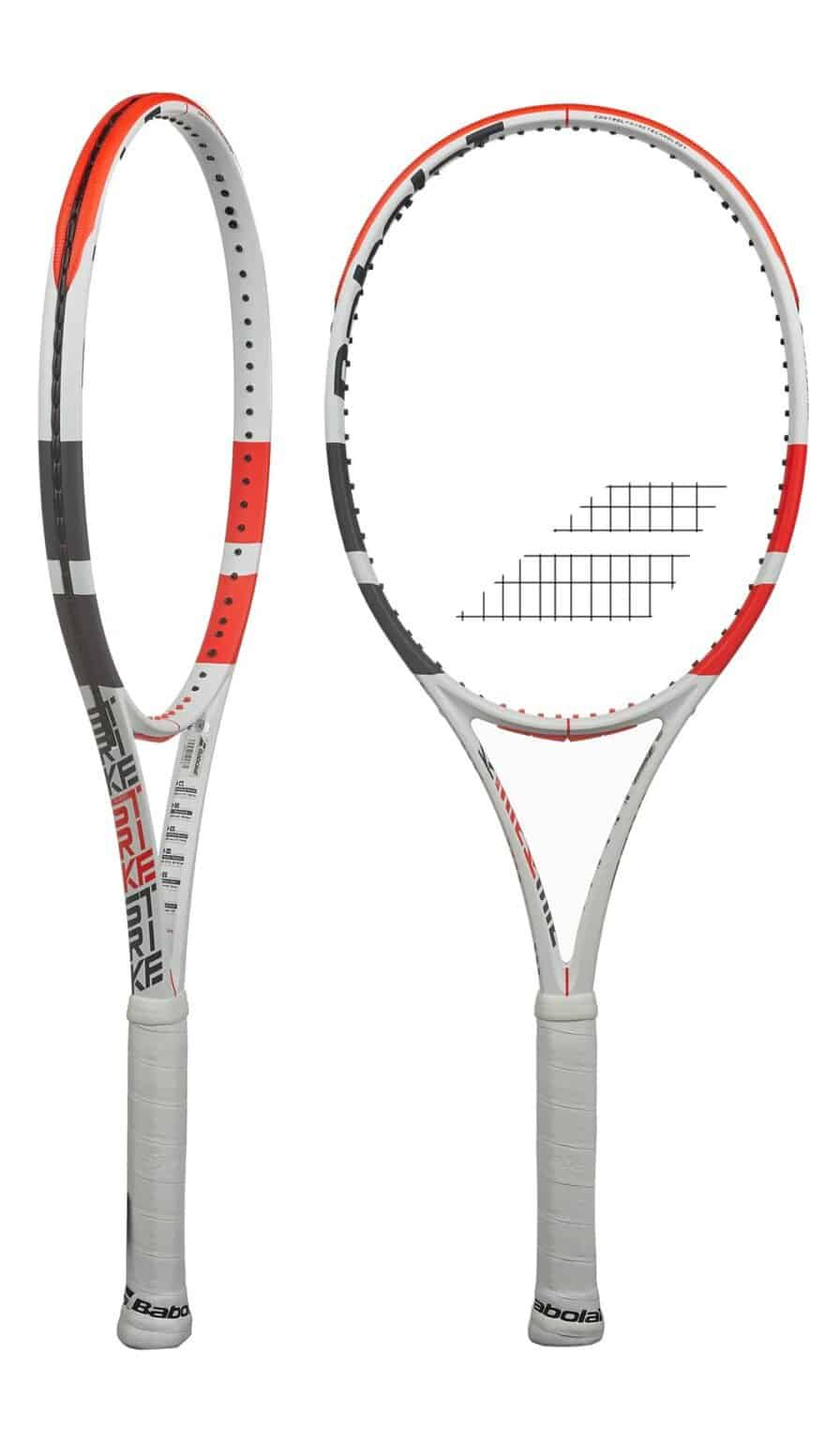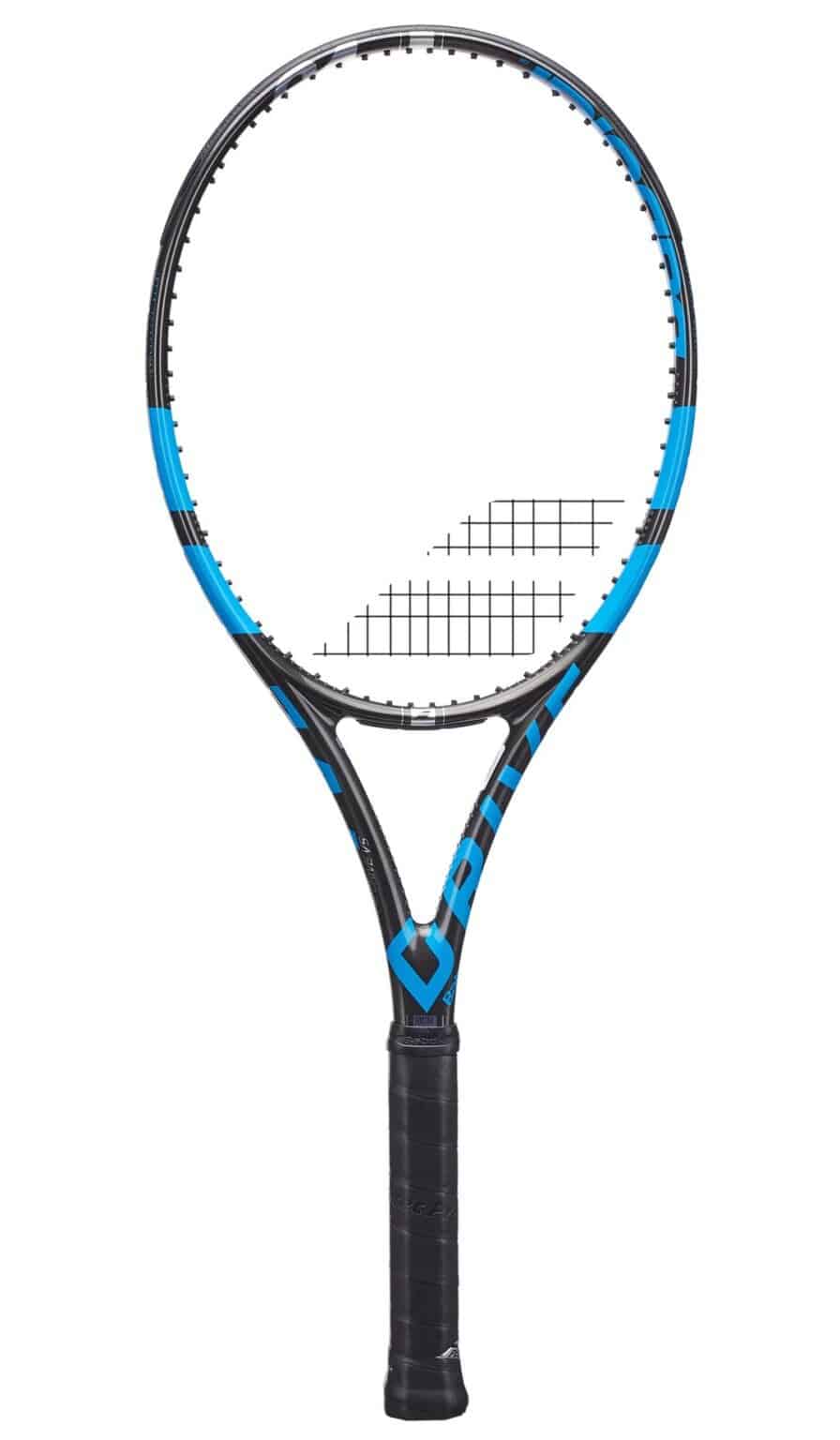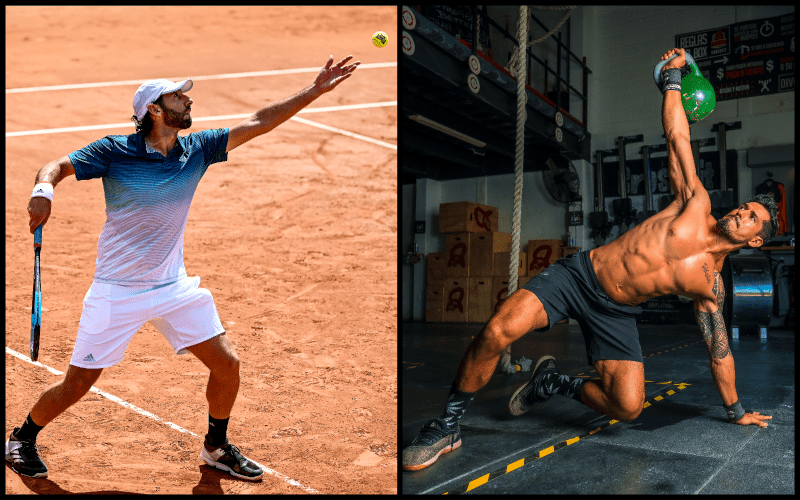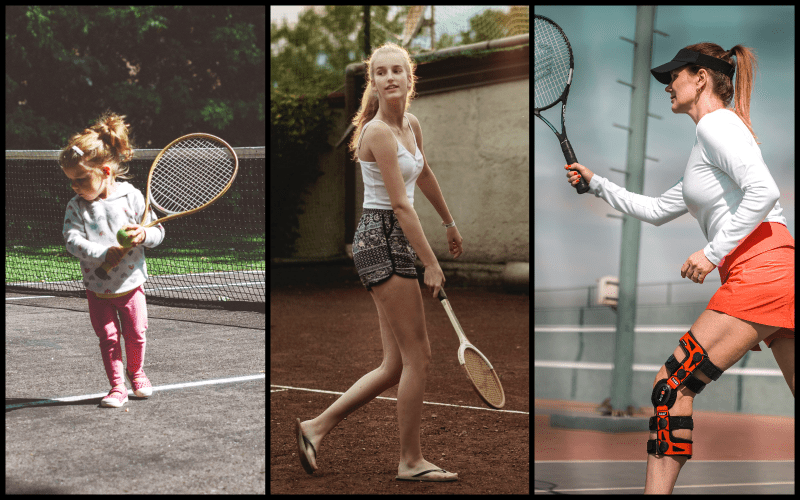Many of us keen players like to think that, if our racket could just give us a few per cent more power with our groundstrokes and serve, we would play much more effectively. Equally, older beginners may not have the technique or physical capacity to create high levels of racket head speed, so they too may want a racket which gives them as much power as possible.
A powerful racket will generally have a large head and a relatively low swing weight. Its frame will be stiff, and it will tend to have a more open stringing pattern, to enable the strings to stretch and rebound. Babolat rackets are very popular among players who like to hit powerful shots from the baseline, so in this article we will consider the best Babolat rackets for power.
The best Babolat rackets that give power to beginners are the Babolat Pure Drive 107 2021 and the Babolat Evo Drive 115 Wimbledon. When it comes to more advanced players, the most powerful Babolats are the Babolat Pure Drive 2021, the Babolat Pure Strike 18×20, and the Babolat Pure Aero.
#1 For Beginners: Babolat Pure Drive 107 2021
The Pure Drive 107 offers a large 107 square-inch head which allows more forgiveness of off-centre contacts. It has an open 16×19 stringing pattern and a head-light balance. Whilst not the stiffest frame, Babolat still measure the Pure Drive 107 as being stiffer than average with a rating of 69, which allows it to provide a good level of power. The Pure Drive 107 can offer power without requiring extremely high racket head speed, and the large head reduces mishits. On the downside, it lacks the manoeuvrability of an advanced player’s racket, and is not designed for control. Reviewers normally find it enjoyable to play with, despite the occasional loss of control.
If you have a fairly short, compact swing, and would like some extra power, the Pure Drive 107 is certainly worth considering.
#2 For Beginners: Babolat EVO Drive 115 Wimbledon
If you feel that you would like something more extreme than the Pure Drive 107, why not try the EVO Drive 115 Wimbledon? With its even larger 115 square-inch head and very open 16×17 string pattern, the EVO Drive 115 is definitely built for power. It has a head-light balance, a weight of just 240g, and a Babolat stiffness rating of 68, very similar to that of the Pure Drive 107. It is even 0.6” longer than a standard racket to give added leverage when serving. This combination of characteristics means that you should have no problem hitting the ball hard with the EVO Drive 115, but controlling it might be tougher, especially as such a large head will be less easy to manoeuvre than a smaller one. Nonetheless, its light weight should partially compensate for this.
If you lack strength and racket head speed, and are looking for a major power boost, the EVO Drive 115 may be exactly what you need.
#1 For Frequent Players: Babolat Pure Drive 2021
Intermediate or advanced players can generate more racket head speed, and prefer the maneuverability of a more modest head size than that of the two rackets reviewed above. Babolat’s top offering for them is the Pure Drive. The Pure Drive features a 100 square-inch head size, a 16×19 string pattern, a fairly high stiffness rating of 71, and an unstrung weight of 318g, along with a head-light balance.
Virtually all reviewers remark upon the easy access to power it provides, and note that if you have the technique you can also generate a lot of spin. On the negative side, some observe that the sweetspot is not as large as they would like, the racket can feel a little stiff, and it is sometimes possible to lose control. Nonetheless, overall, the racket is well liked by players.
If you are an advanced player with fairly high racket head speed, and you want a power-oriented racket, the Pure Drive 2021 simply has to be on your shortlist.
#2 For Frequent Players: Babolat Pure Strike 18×20
The Pure Strike 18×20 boasts a 98 square-inch head size, and weighs in at 323g. It has a stiffness rating of 66, putting it closer to the middle of the range than some of the other rackets reviewed here, and combines a head-light balance with an 18×20 string pattern. Reviewers who generate high levels of racket head speed often like this racket, as it provides plenty of power in conjunction with good levels of control. The relatively dense string pattern and smaller head help players to reduce inaccuracy. The swing weight of the racket probably makes it more suitable for physically stronger players: some female players have suggested that the Pure Strike 18×20 feels a little underpowered.
If you are strong enough to generate good racket head speed with a racket of this weight, the Pure Strike 18×20 is definitely worth testing.
#3 For Frequent Players: Babolat Pure Aero
The Pure Aero is designed to offer maximum spin potential, combined with plenty of power, for advanced players. Weighing 300g unstrung, with a 100 square-inch head, the specifications of the Pure Aero are not too different from those of the Pure Drive. The Pure Aero has a similarly open 16×19 string pattern, but combines a slightly lighter weight with a more flexible frame, measuring 66 on Babolat’s stiffness scale. Reviewers generally agree that the Pure Aero offers excellent levels of spin and power, although some question its stability.
If you crave power, but love hitting heavily spun shots, the Pure Aero may be the perfect weapon for you. You will certainly want to add it to your demo list.
Final Thoughts
Babolat offer a great range of power rackets. Whether you are a beginner or a tournament player, there are options to suit you. Why not test some today?

